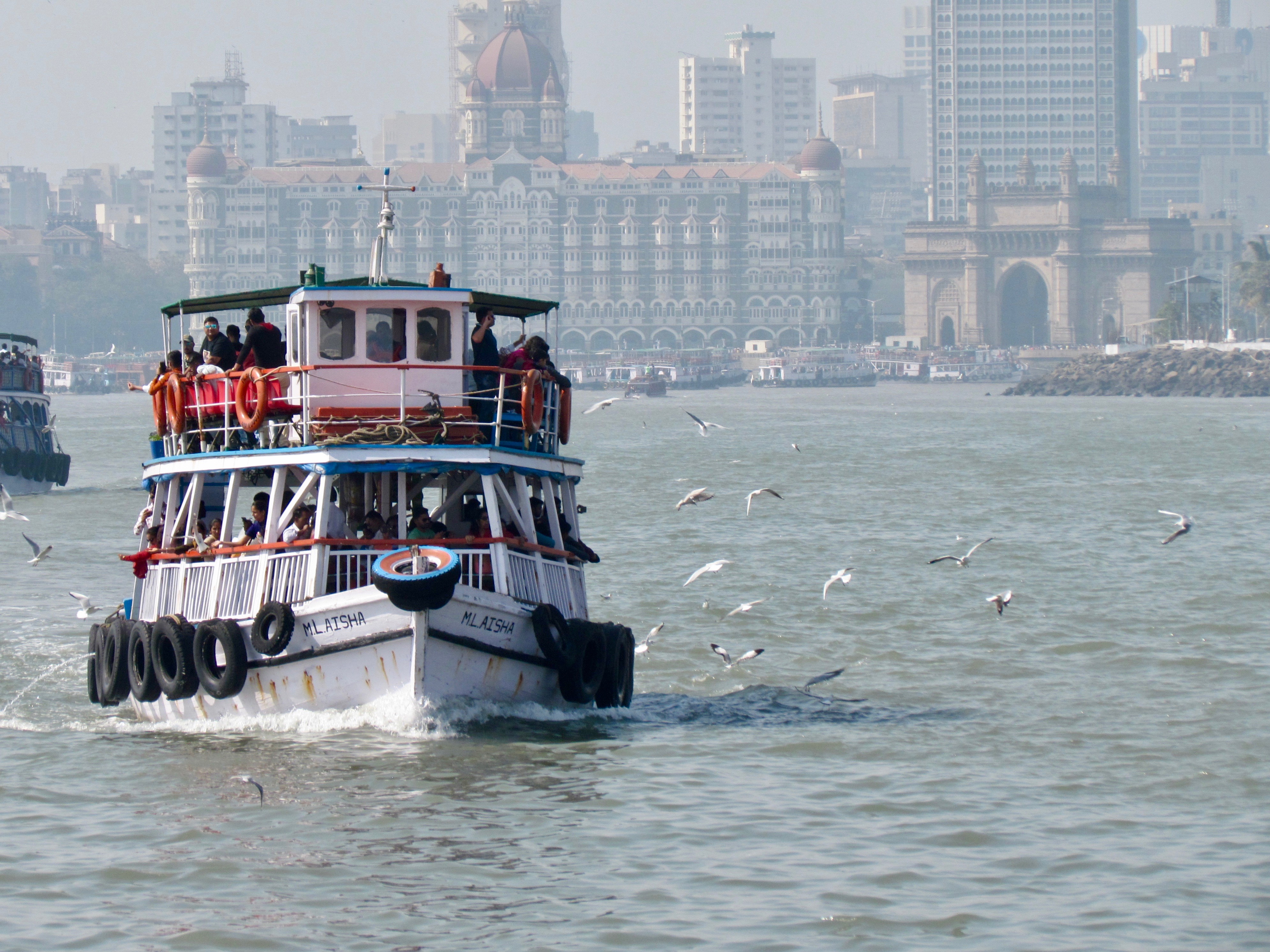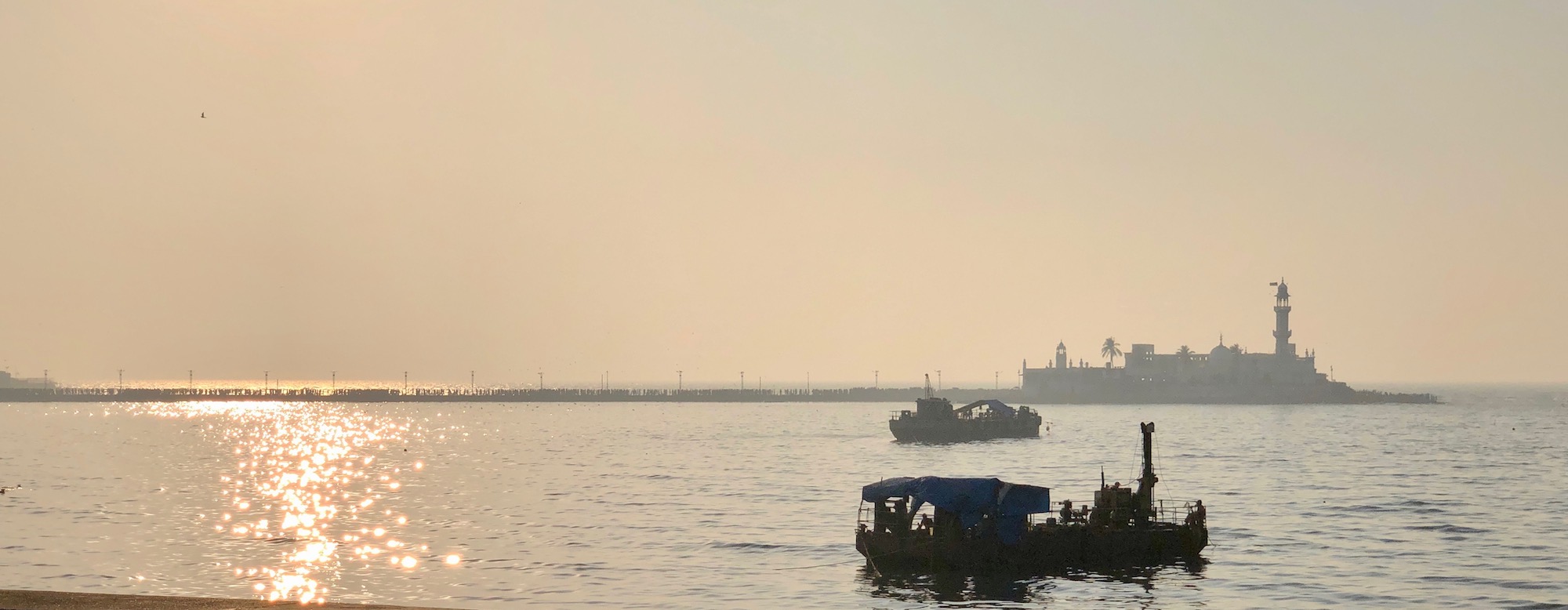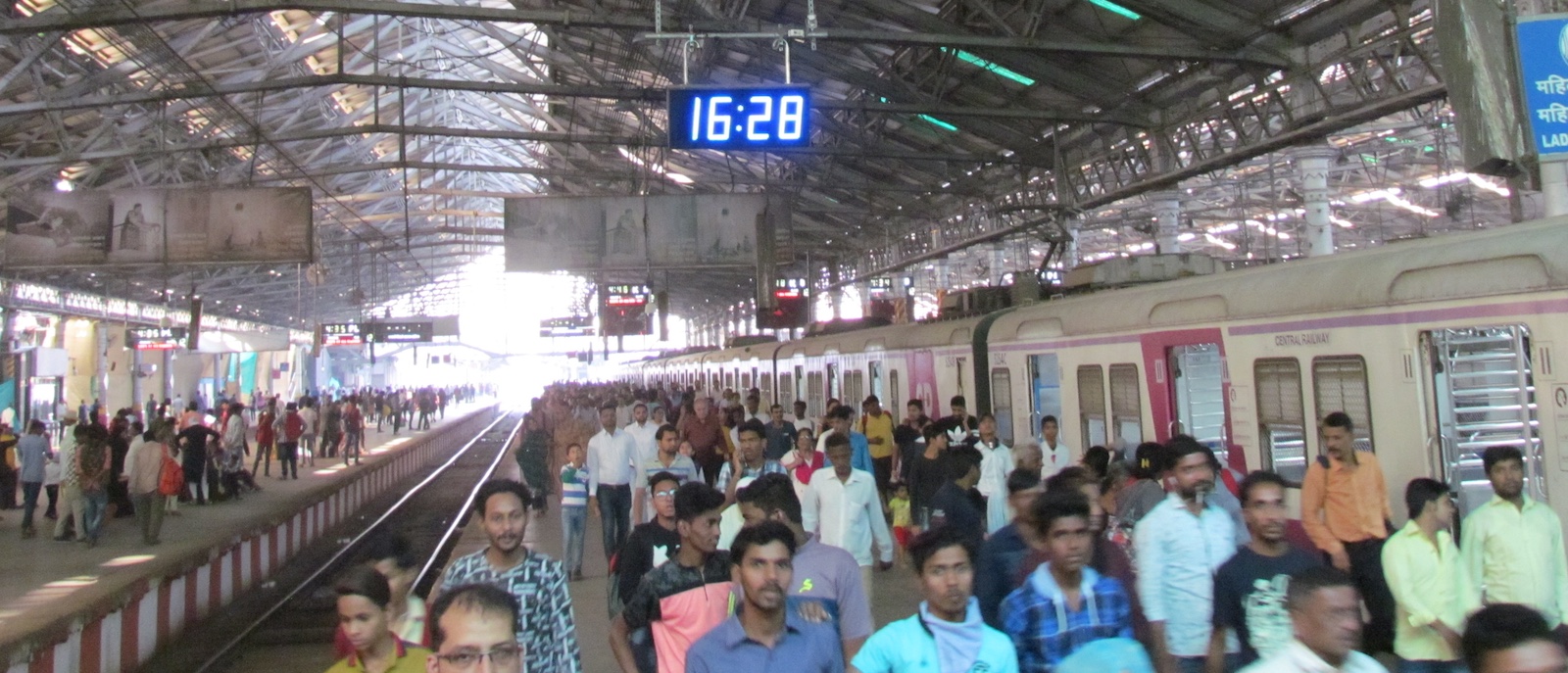Swallowing a malaria pill, I was enjoying the “inflight entertainment” of scores of seagulls flying alongside our ferry to Elephanta Island. The ferry was laden with Indian tourists going to see the “city of caves.” It took about an hour for the little boat to make the 12 kilometres to the island, puttering out from the Gateway of India, past the naval base with its aircraft carrier museum, weaving through dozens of ships at anchorage, and finally past an oil terminal before docking at an ancient stone jetty.

Being on the Arabian Sea, Mumbai has been an important port city for millennia, an important crossroads for products, cultures, religions and empires from East to West and back again. This fact excited me the most about the opportunity to visit India.
The city is on a peninsula that juts southwardly into the sea. Many times we drove down the western coast, past the beaches and the Haji Ali Tomb, a mosque and tomb on a small island half a kilometer off the coast. When the tide is low pilgrims make the crossing. Every time we drove into the city we took the Rajiv Gandhi Sea Link, a 5 kilometer long toll bridge. It takes only a few minutes to cross the smooth surface, and apparently it cuts off more than an hour of commute through the regular twisty streets of Mumbai.

The northern side of the bridge is the neighbourhood of Bandra where one evening we went to the bazaar. The traffic and honking give one the impression of how many people are actually in this city. The shopping area of Bandra consisted of winding streets with single-storey storefronts full of people. Outside of the shops the sidewalks were lined with street vendors, often selling the same products as the store they were in front of. Shoppers slowly shuffled in line with shops on one side and street vendors on the other. While passing a clothing shop the store owner rushed out to berate a street vendor selling clothes — in direct competition and without a license. Elsewhere we halted in an underpass stairwell as a teenage boy shouldered a clothes rack loaded with women’s attire hauled his wares up the stairs: moving selling locations, likely something he did more than once that evening. We paused in a food area and I ate an “Indian hamburger” — a spicy, deepfried mashed banana patty in a white dinner roll — and picked up some brilliant cashew-based desserts in silver foil.
The streets here are nowhere near as smooth as the bridge, or the streets of Delhi. Mumbai is under constant construction now, with new roads being paved and new subway lines being dug. The infrastructure here is dated and over capacity, but with elections coming up, money is being spent conspicuously.
These damnable roads, jammed with all this damnable traffic, was the source of my almost eternally sickened state in India. I stayed in very good hotels and was protected by my corporate minders who never let me out of their sight. I was only ever given the highest quality food and never suffered from diarrhea or vomiting. However I did feel queasy quite often due to all the driving. Bouncing along pot-holed, bumpy roads, weaving between vehicles and pedestrians who walk between cars (no sidewalks), and the stop-start jerky driving constantly triggered my carsickness. Rather than “Delhi Belly” I suffered from “Mumbai Motion Sickness.”
The ferry to Elephanta Island was a welcome change from all the driving. Heavily laden with Indian tourists it slowly passed through still waters to the island. We took a novelty steam train down the long jetty, then spend the day wandering around ancient 2200 year old Hindu and Buddhist caves, carved out of the basalt rock of the mountain.

Despite these being a UNESCO World Heritage site, and an important cultural and historical site, I was amazed that basically nothing was cordoned off. There were tourists from all over India (and quite a few white people, more than I had seen anywhere else thus far), walking through the shady caves, right into altars, touching statues and lingams. We arrived on the first boat of the morning, so there were not many people, and the weather was still relatively cool. After viewing the caves we climbed to the highest peak to get a view of the city. There was a large military gun there (8” barrel… anti-aircraft?) watching over the bay. But it was from some previous crisis, left abandoned and rusting. Kids climbed all over it taking pictures. We rested here watching families feeding the monkeys on this gun emplacement from the last century, sitting atop a mountain carved out by holy men two millennia ago.
The return trip was even slower than coming. The boat was so laden with people that I feared we would sink! But everyone was in good spirits and enjoying the opportunity to sit down after hiking all day in the hot sun. I conversed with some locals on the ferry as we watched massive container ships and even spotted a submarine pass by. I had never seen one in the open sea before.
After returning to land, we walked around the Gateway to India plaza people watching for but before popping into the Taj Hotel to enjoy some air conditioning and a late lunch. A lovely way to wrap up the tour, but we weren’t done yet. Back into the car we drove through the center of town past the barracks, the law courts, the university, and past the street where we tried to go to the synagogue made by Iraqi Jews in the 19th century (closed for renovations). Driving north we went through some Parsi neighbourhoods where the driver pointed out some delicious bakeries. I recalled the wonderful honey sweets I ate in Iran in agreement.
Within a few minutes we got to our destination: the iconic Chhatrapaji Shivaji Terminus (CST), a train station built in the late 1880s. We took the stairs below the streets to the underground, and were assaulted by frenetic light and sound. The low-ceilinged passage under the road to the station wasn’t well lit, but was packed with hawkers selling belts, slippers, electric shavers, and flailing battery-powered mosquito-zapping fans that made the most terrible sound. Inside the station we were able to see the famous regional trains pull in, doors wide with people hanging out.

Both the inside and outside of the station was under renovation and great care was taken to preserve it. The setting sun give the gothic station a sort of golden hue, a visage of imperious dignity — turns out the sun does set on the empire now.

Next time we will travel to Agra in central North India to see the Taj Mahal

